
Manufacturer's Specifications
Frequency Response: 4 Hz to 20 kHz, ±0.3 dB.
THD: Less than 0.0025% at 1 kHz.
S/N: 108 dB.
Dynamic Range: 96 dB.
Output Levels and Impedances:
Unbalanced outputs, 2 V / 5 kilohms; balanced outputs, 2 V/600 ohms; digital output, 0.5 V peak to peak/75 ohms; headphones, 45 mW maximum with 32-ohm load.
Number of Programmable Selections: 20.
Power Requirements: 120 V, 50/ 60 Hz, 35 watts.
Dimensions: 17 11/16 in. W x 3 7/8 in. H x 16 in. D (44.9 cm x 9.8 cm x 40.6 cm).
Weight: 23.1 lbs. (10.5 kg).
Price: $1,400.
Company Address: 1250 Valley Brook Ave., Lyndhurst, N.J. 07071.
After several years of concentrating on "rack systems," Sansui has finally come home. By this I mean that they have designed a group of components reminiscent of the Sansui of old, a company dedicated to state-of-the-art technology and superb-sounding audio equipment. To differentiate the new high-end products from the components found in their rack systems, Sansui has dubbed this new line the "Vintage" series. The CD-X901 CD player, without a doubt one of the finest looking and best sounding players I have tested, definitely belongs in Sansui's Vintage category. It is the equal of some of the most highly regarded CD machines available.
Like other top players, the CD-X901 features random access programming of up to 20 selections, access to any track or any index number within a track, audible music search, music scanning (automatic play of the first few seconds of each track), various repeat-play modes, and a wireless remote control that duplicates just about all of the functions found on the front panel. Beyond all of that, Sansui has added a digital output terminal for those who prefer using a separate D/A signal processor. There is also a pair of XLR balanced-output connectors (in addition to the usual unbalanced phono jack outputs) for those who have amplifiers or preamplifiers with balanced inputs. I should mention that one integrated amp in Sansui's Vintage series, the AU-X901, does, in fact, have balanced inputs. It would therefore be an ideal choice to use with this player, in terms of both functional compatibility and styling.
Control Layout
The all-black front panel of the CD-X901 is similar in layout to that of several other full-featured CD players. At left is the "Power" switch, a "Timer" switch (used if the player's power cord is connected to an external timer), a smooth-gliding disc drawer, and an "Open/Close" pushbutton. A large display area near the center of the panel includes both a numerical readout for the track being played and a "music calendar." The calendar is a grid of numbers from 1 to 20 that shows all the tracks on a disc or the tracks that have been programmed; as each track is played, the indicator light for that track is extinguished. Many other indications of player status are also provided, including a display of the repeat-play mode in use, if any, and displays of elapsed or remaining time for the current track or for the entire disc.
The time-display modes are called up by a "Time" button below the display.
To the right of the display area are the numeric keys, plus "Set" and "Cl" (clear), used for programming and for direct access of a desired track or index point. Farther to the right are the "Play," "Pause," "Music Scan," and "Stop" keys, as well as two search keys marked with left- and right-pointing arrows. Along the lower edge of the panel are the buttons for repeat play, the "Time" button, a "Check" button for verifying programs, a "Spacing" button (which inserts a 4-S space after every selection, for taping), a pair of "Index" buttons, and a pair of buttons labeled "AMPS" (Automatic Music Program Search) which move the laser pickup for ward or back to the start of the next or the previous tracks.
At the lower right corner of the panel is a stereo phone jack and its level control.
The rear panel is equipped both with unbalanced, phono tip output jacks and with the balanced XLR-type output connectors mentioned earlier. Also on the rear is the single digital output jack and an associated on/off switch that must be placed in the "On" position if you intend to use that jack.
Sansui even thought of including a chassis ground terminal on the rear panel. I wish other makers of CD players would include one, as several times I've found that grounding the chassis of a CD player to the chassis of a preamp or amplifier can actually reduce background noise and hum.
Measurements
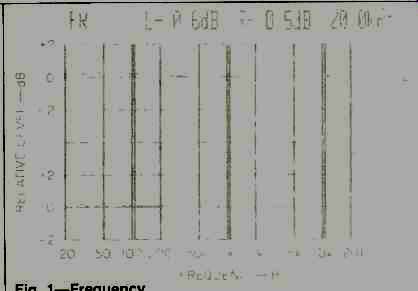
Fig. 1--Frequency response. left (top) and right channels.
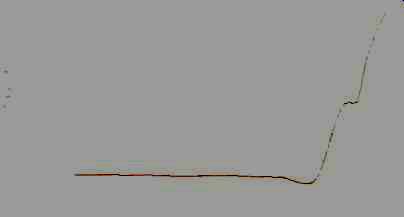
Fig. 2--THD + N vs. frequency at maximum recorded level.

Fig. 3--Spectrum analysis of 20-kHz test tone; sweep is linear from 0 Hz
to 50 kHz. Vertical scale: 10 dB/div.
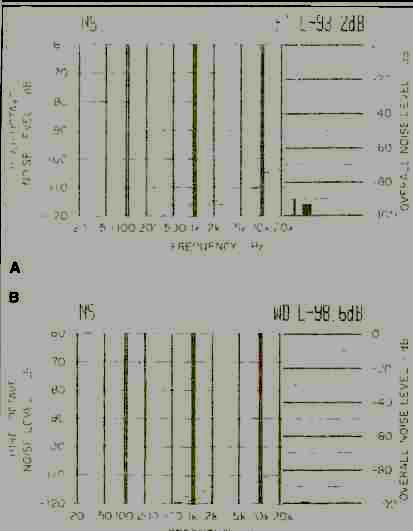
Fig. 4--S/N analysis, unweighted (A) and A-weighted (B).
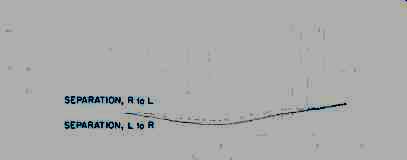
Fig. 5--Separation vs. frequency.
Figure 1 is a plot of frequency response using the EIA approved CD-1 test disc. At 20 kHz, response was down only 0.6 dB for the left channel and only 0.5 dB for the right channel.
Figure 2 is a plot of THD + N versus frequency, At 1 kHz, THD + N measured 0.0035%, an excellent figure. Even more impressive, however, were the THD + N readings at higher frequencies. No band-pass filters were used to make these measurements, so a reading taken at 20 kHz includes any and all out-of-band products, regardless of whether they constitute harmonic components, "beats" between the sampling frequency and the reproduced frequencies, or anything else. Largely due to beats, many CD players I've tested have exhibited THD + N levels of well over 1% when subjected to this type of "open-ended" bandwidth measurement. The Sansui unit yielded a reading of only 0.030% for this test, indicating that it has superbly linear D/A converters, optimally designed digital filters, and well-designed post-D/A analog filtering.
This excellence is further confirmed in Fig. 3, which shows a spectrum analyzer's linear sweep from 0 Hz to 50 kHz.
The tall spike represents a 20-kHz output signal as reproduced from the test disc. The dynamic range in this display is greater than 70 dB, so the fact that there is only the very beginning of an additional spike (just barely visible behind the "n" in "Frequency") above the 20-kHz test tone, and the fact that there is no spike in the in-band region to the test tone's left, confirm my THD + N reading of roughly 0.03% at 20 kHz.
Figures 4A and 4B show the distribution of noise appearing at the output of the player when the "minus infinity" or "no signal" track of my test disc was played. Overall unweighted signal-to-noise ratio was 93.2 dB, and A-weighted signal-to-noise ratio was 98.6 dB. I am somewhat at a loss to understand how Sansui arrived at a 108-dB specification for S/N.
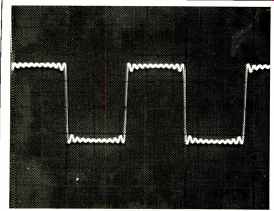
Fig. 6--Reproduction of a 1-kHz square wave.
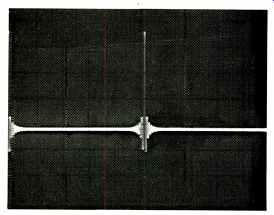
Fig. 7--Unit-pulse test.
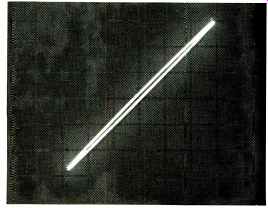
Fig. 8--Interchannel phase comparison at 20 kHz. Slightly elliptical shape
indicates small phase error (see text).
On the other hand, I measured a much higher dynamic range capability for the CD-X901 than the manufacturer specified -104 dB as against 96 dB claimed. Here, the disparity may well be due to a difference in the way the measurements were made. I recently switched to the method suggested in the proposed EIA Standards for CD player measurement. It stipulates using a special dithered track on the CD-1 test disc and comparing the output of a -60 dB recorded signal with the output of dithered noise only, expressed in dB. To this difference is added the initial -60 dB.
Linearity was measured two ways: With and without dither added. Without dither, linearity was accurate all the way from 0 to -80 dB, with an error of 2 dB at-90 dB (the output read -88 instead of -90 dB). Using the dithered test signals, accuracy down to -80 dB was still maintained within 0.1 dB, but at-90 dB the error was 3 dB. The result of the undithered linearity test is considerably better than what I have measured from most CD players in the past; as to the dithered test, I have no basis for comparison, having begun to use it only recently. (See "Dithered Linearity CD Test Signals," which accompanied my review of the Technics SL-P1200 player in the December 1987 issue.) Stereo separation (Fig. 5) was the best I have ever obtained for any Compact Disc player. While most units have exhibited a decreasing separation at higher frequencies, the CD-X901 achieved separation of approximately 95 dB even at 16 kHz, which is the highest test frequency used in this measurement.
The 1-kHz square wave shown in Fig. 6 and the unit pulse shown in Fig. 7 are typical of what I have observed from CD players that use digital filtering and four-times oversampling. The symmetrical-looking horizontal ripples in Fig. 6 should not be interpreted as "ringing." Rather, they are simply the result of "missing" higher-order harmonic components above 20 kHz that would be required to faithfully depict a square wave at this frequency. The square wave shown in Fig. 6 is as good as any I have seen reproduced by a CD player.
Figure 8 is the Lissajous pattern obtained when 20-kHz signals were fed to the vertical and horizontal inputs of my test oscilloscope. A straight line would indicate absolutely no difference in phase between the two signals. The very slightly elliptical shape of this display shows that there may be a phase error of a few degrees, probably caused by some minor and audibly insignificant difference in the phase characteristics of the player's left and right analog output stages.
Use and Listening Tests
At the time I tested the CD-X901 in my lab, I had two other high-end machines on hand, and I used them to make listening comparisons. The other units were my own Sony CDP-650ESD reference player and the "professional" Technics SL-P1200. I regard these two players as especially good-sounding units. The Sansui CD-X901 equaled both of them, reproducing highs with exceptional clarity and delivering awesome bass energy.
I recently obtained the two-disc Telarc release of Liza Minnelli at Carnegie Hall (CD-85502). If you want to hear what live sound can be like, as reproduced on well-engineered CDs, I urge you to play these discs on a unit such as the CD-X901. Close your eyes and it won't be too hard to imagine that you are in the audience. There's not the slightest hint of "canned" sound from this CD player when reproducing well-made CDs.
These days, properly produced discs aren't all that hard to find, but you'll have to go some distance to find a player that comes up to the sonic standards of the CD-X901. It's nice to have Sansui's engineering efforts directed once again to such "vintage" products. Welcome home, Sansui, we've missed you!
-Leonard Feldman
(Audio magazine, Jan. 1988)
Also see:
Sansui PC-X1 PCM Digital Processor (Equip. Profile, Jan. 1984)
= = = =